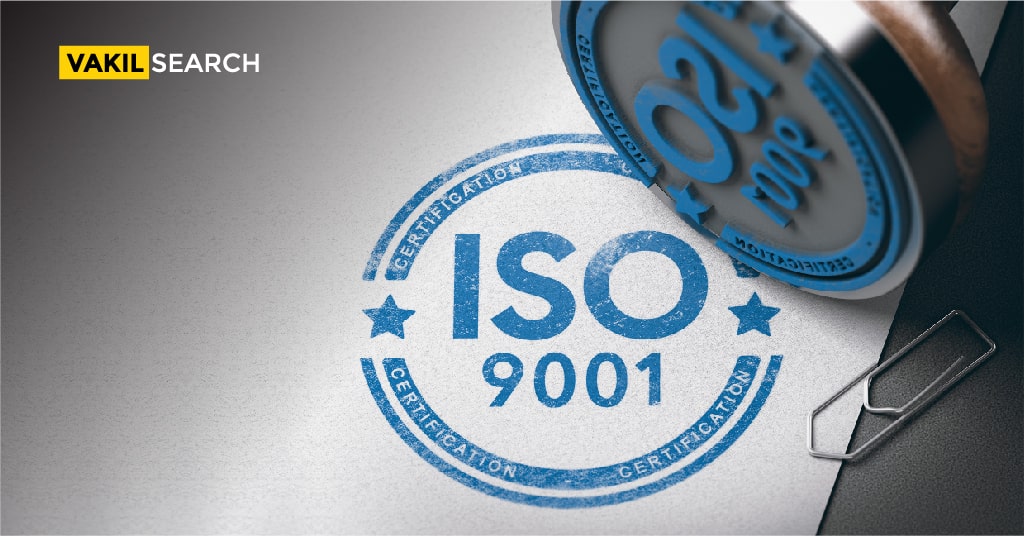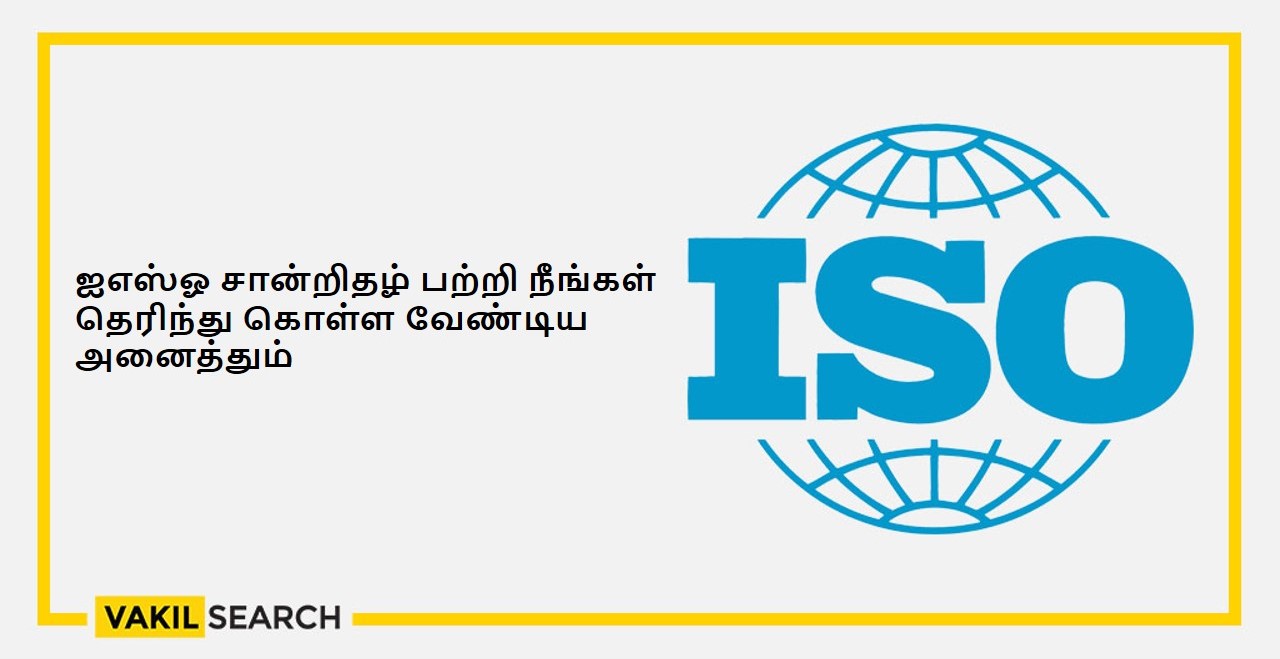In June 2020, Odisha became the first Indian state to obtain ISO certification for hostels meant for tribal students. This is a part of the ‘Mission Suvidya’ project launched by the State’s ST & SC Welfare Department to provide all the tribal hostels in the state with uniform standards of infrastructure, amenities, and human resources.
For organizations operating in both manufacturing and services, obtaining ISO 9001 accreditation is crucial. This accreditation serves as a clear indication that a company adheres to international quality standards, ensuring the delivery of high-quality products and services to its clients. Beyond being a mark of quality, ISO 9001 certification is a decisive factor for businesses.
From a customer perspective, ISO 9001 certification provides a tangible assurance of the company’s dedication to quality. Any potential customer seeking to engage with a company can easily cross-check its ISO 9001 certification status. This transparent verification process aids customers in making informed decisions and instills confidence in the reliability of the products or services offered by the certified company.
Moreover, ISO certification serves as an internationally accepted pathway for identifying and addressing potential gaps in businesses. It acts as a diagnostic tool, revealing any undiscovered shortcomings, vulnerabilities, or deficiencies in documentation and policies.
In this blog we delve into various facets of ISO certification, shedding light on the essential paperwork and processes involved. By exploring these aspects, businesses can gain a comprehensive understanding of the significance and impact of ISO 9001 accreditation on their operations and market positioning.
Significance of ISO Certification
In the competitive landscape, the adherence to quality standards becomes a pivotal aspect that influences decision-making. ISO 9001 certification, therefore, becomes a prerequisite, underscoring a commitment to meeting globally recognized benchmarks for quality management. This certification is not just a formality; it signifies a structured approach to delivering excellence in every aspect of business operations.
Different Type of ISO Certification
Before delving into the ISO certification process, it’s essential to recognize that there are various types of ISO registrations, each catering to specific aspects of organizational management. These include:
- Quality Management – ISO 9001:2008:
This certification focuses on quality management systems, ensuring that organizations meet international standards in delivering high-quality products and services. It provides a framework for effective quality management.
- Environmental Management – ISO 14001:
ISO 14001 addresses environmental management systems, helping organizations establish and implement practices that contribute to environmental sustainability. It emphasizes minimizing the environmental impact of business activities.
- Information Security Management – ISO 27001:
ISO 27001 pertains to information security management systems. It sets standards for protecting sensitive information, ensuring the confidentiality, integrity, and availability of data within an organization.
- Food Safety Management – ISO 22000:
This certification is specific to the food industry, focusing on food safety management systems. ISO 22000 ensures that organizations in the food supply chain maintain high standards of safety and hygiene.
Documentation Process for ISO 9001:
The documentation process for ISO 9001 certification is not one-size-fits-all; it varies based on several factors:
- Size of the Firm:
The size of the organization influences the extent and complexity of documentation required for ISO 9001 certification. Larger organizations may need more comprehensive documentation to cover diverse operations.
- Nature of Activities, Products, and Services:
The nature of the organization’s activities and the range of products or services offered play a crucial role in determining the documentation needs. Different industries may require specific documentation to address unique challenges and requirements.
- Complexity in Business Processes:
The level of complexity in business processes also dictates the documentation process. Organizations with intricate operations may need more detailed documentation to ensure effective quality management.
- Competence of Persons:
The competence of individuals within the organization is a key factor. Documentation may need to be tailored to the skill levels and responsibilities of personnel involved in implementing and maintaining the quality management system.
Need for ISO 9001 Certification
ISO 9001 certification is vital for companies due to several reasons:
Proof of Adherence:
Certification serves as evidence that the company follows established protocols, validating the commitment to international standards.
Process Improvement Tool:
It assists management in assessing current processes, pinpointing areas for improvement, and ensuring alignment with quality policies and deliverables.
Controlled Procedure Execution:
Certification ensures that procedures are executed in a controlled manner, fostering a structured and efficient workflow.
Error Reduction:
The implementation of ISO 9001 minimizes errors, contributing to enhanced product and service quality.
Facilitates Communication:
It promotes effective communication between different segments of the organization, facilitating collaboration and coordination.
Benchmark for Systems:
ISO 9001 sets a benchmark for understanding, implementing, and maintaining a systematic approach within the organization.
Consistency in Actions:
The certification helps in achieving consistency in actions, aligning operations with established standards.
Transparency in Business Processes:
ISO 9001 brings transparency to business processes, instilling trust among stakeholders and customers.
What Are the Different Types of Documents Required for ISO 9001 Registration?
The documentation process for ISO 9001 registration encompasses four distinct levels, each serving a crucial purpose in establishing and maintaining quality management standards:
- Level 1 – Quality Manual:
At the forefront of ISO 9001 document requirements is the Quality Manual. This foundational document outlines the organization’s structure and management processes. It provides a comprehensive view of how business objectives will be achieved while upholding the quality of deliverables.
- Level 2 – Documented Procedures:
The second level mandates the creation of Documented Procedures. These are specific working protocols that serve as standard documents for the organization. These procedures are detailed and encompass all necessary steps, outlining the required quality standards to be met.
- Level 3 – Work Instructions:
Work Instructions form the third requirement in the ISO 9001 documentation process. These detailed documents outline various activities within the organization. From intricate processes to the simplest measures contributing to desired outcomes, work instructions provide a thorough guide for operational excellence.
- Level 4 – Records and Forms:
The final level involves the creation of Records and Forms. These documents capture a record of all work performed by the organization. They serve as a valuable resource for management to review, assess progress, and identify areas for improvement. Records and Forms may include labels, cards, workbooks, forms, tags, and more.
Th six pillar of ISO are:
|
ISO 9001 Mandatory Documents and Records
The essential documentation required for ISO 9001 compliance comprises:
| ISO 9001 Mandatory Documents and Records | Relevant ISO Clause |
| Documentation for monitoring and measuring resources | 7.1.5.1 |
| Calibration records for monitoring and measuring equipment | 7.1.5.2 |
| Records certifying the competency of staff | 7.2 |
| Documentation related to the review of product/service requirements | 8.2.3.2 |
| Records of design and development inputs | 8.3.3 |
| Documentation of design and development controls | 8.3.4 |
| Records pertaining to design and development outputs | 8.3.5 |
| Record of changes in design and development | 8.3.6 |
| Criteria used for the evaluation and selection of suppliers | 8.4.1 |
| Characteristics of the product or service to be provided | 8.5.1 |
| Identification and Traceability records | 8.5.2 |
| Records concerning customer property, including any modifications | 8.5.3 |
| Documentation for production/service provision change control | 8.5.6 |
| Records of the release of products and services | 8.6 |
| Documentation for the control of nonconforming outputs | 8.7.2 |
| Results of monitoring and measurement | 9.1.1 |
| Internal audit results | 9.2.2 |
| Results of the management review | 9.3.3 |
| Records detailing corrective actions, including opportunities for improvement | 10.2.2 |
Non-Mandatory Documents Required for ISO Certification
| Non-Mandatory Documents for ISO 9001 | Relevant ISO Clause |
| Procedure for determining the organization’s context and addressing interested parties | 4.1 and 4.2 |
| Procedure for managing risks and opportunities | 6.1 |
| Procedure for addressing competence, training, and awareness | 7.1.2, 7.2, and 7.3 |
| Procedure for maintenance of equipment and measuring equipment | 7.1.5 |
| Procedure for control of documents and records | 7.5 |
| Sales procedure | 8.2 |
| Procedure for design and development | 8.3 |
| Procedure for production and service provision | 8.5 |
| Warehousing procedure | 8.5.4 |
| Procedure for managing nonconformities and implementing corrective actions | 8.7 and 10.2 |
| Procedure for monitoring customer satisfaction | 9.1.2 |
| Procedure for conducting internal audits | 9.2 |
| Procedure for facilitating management reviews | 9.3 |
ISO 9001: Information Required
- Design and development verification
- Purchasing process
- Management reviews
- Identification and traceability of processes
- Internal audit
- Monitoring and measurement of products
- Control standards for production and services rendered
- Validation of processes for production and services rendered
- Design and development output
- Competence, awareness and training of employees
- Design and development inputs
- Design and development validation
- Planning of product realisation
- Design and development changes
- Control, monitoring and measurement of types of equipment used
- Design and development review
- Design planning output
- Review of requirements
- Corrective actions
- Control set-up for nonconforming product
- Preventive actions
- Analysis of data collected
| As previously said, the number of documents required may vary depending on the size, complexity of operations, and other considerations. Sometimes businesses may also need to create new sets of procedures for quality processes. |
Wrapping It Up
It is critical for any organisation to have all the documents required for obtaining ISO certification kept up to date and well-maintained. This not only helps to acquire the trust of stakeholders investing in the firm but also helps customers build trust in the organisation.
Moreover, having well-written documentation has a positive impact on the organisation’s reputation. Furthermore, it provides insight into how well the organisation adheres to standard norms. Additionally, the protocols established for obtaining ISO certification assist the staff in following a standardised procedure and boots the firm’s overall productivity.
| Get in touch with the ISO professionals at Vakilsearch today to get expert advice on the technicalities of obtaining ISO 9001 certification in India! |
Other Related Topics:









